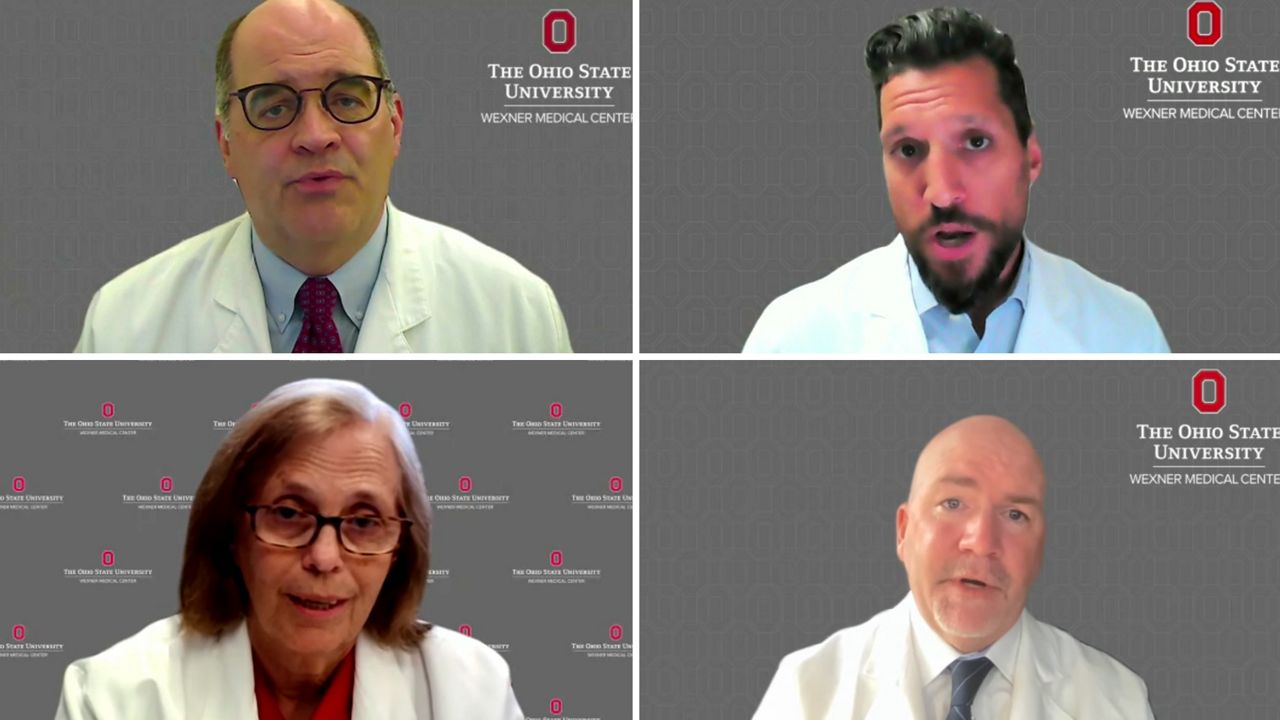COLUMBUS, Ohio — Hospitals in Ohio could soon face a critical strain if COVID-19 continues to surge at the current rate, according to the lead pandemic official for central and southeast Ohio hospitals.
What You Need To Know
- As COVID-19 surges, Ohio hospitals may be 2-4 weeks from serious resource strain
- The vast majority of hospitalized patients are unvaccinated, officials said
- Ohio hospitals are receiving requests to take patients from southern states
Hospitals across Ohio could be forced to postpone elective procedures and begin shuffling around patients, Ohio State Wexner Medical Center Chief Clinical Officer Dr. Andrew Thomas said at a news conference Thursday.
“I think over the next 2-4 weeks, you'll see a number of hospitals potentially making difficult decisions of limiting elective care, potentially closing some outpatient services in order to redistribute staff to cover additional patients in the hospital,” Thomas said.
One hospital in the region that Thomas represents has already had to do exactly that in response to surging COVID-19 patient numbers, he said.
“These quick rises over the last four weeks have many of us concerned about the ability of the healthcare systems across the state of Ohio to weather another large COVID patient surge. The elasticity or the resilience of those hospitals to expand beds, expand the ability to care for non-COVID patients, is certainly in question moving forward,” Thomas said.
Thomas confirmed that Ohio hospitals are also getting requests from multiple southern states seeking to transfer COVID-19 patients.
“This is a difficult scenario, and we want to try and avoid that here in our state,” he said.
In Ohio, 1,641 patients were hospitalized with COVID-19 as of Thursday morning, an increase from just 200 hospitalizations on July 9, according to the Ohio Hospital Association.
According to Dr. Iahn Gonsenhauser, Wexner’s chief quality and patient safety officer, COVID-19 numbers in Ohio are reaching alarming levels.
“While not approaching the largest peak that we've seen, it's starting to compete for the second-largest peak that we've seen at this point, and with that increase in community prevalence, the risk to all of us increases and starts to increase substantially,” he said. “Mask use is as important now as it has ever been.”
The surge in COVID-19 cases is being driven by the delta variant, which Chief Scientific Officer Peter Mohler said represents about 100% of Ohio State’s recent COVID-19 cases.
The variant is more than twice as contagious as previous strains, and it can cause more severe disease, Mohler said.
Authorized COVID-19 vaccines remain highly effective at preventing severe disease. Since April 1, only seven of Wexner’s 495 COVID-19 patients were fully vaccinated people who did not have another comorbidity, officials said.
Director of Infectious Diseases Dr. Susan Koletar said that amid news of booster shots, officials will continue to stress that the vaccines offer strong protection even without the booster.
While more vaccinated people are contracting COVID-19 due to the emergence of the delta variant, those infections tend to be mild or even asymptomatic, she said.
“As immunity wanes over time, there’s opportunities to boost or augment those responses with additional doses," she said.
In the U.S., boosters for the Pfizer and Moderna vaccines will be available to residents eight months after their second dose, with administration beginning Sept. 20.
Wexner is prepared to administer boosters both to immunocompromised people, who are eligible now, and to those who will become eligible in the fall, officials said.
“We think there are going to be a lot more options than there were in January or February of last year for the third-dose vaccine,” Thomas said.
Hospital officials in Ohio are particularly concerned about the ongoing COVID-19 surge because facilities in the state are facing high patient numbers of non-COVID patients, Thomas said. In central Ohio, emergency rooms have been “bursting at the seams,” he said.
Staff in Ohio hospitals have been working overtime due to the high patient numbers. Thomas described the mood among hospital staff as a mix of fatigue and frustration regarding low-vaccination rates and poor usage of masks.
“You add all that together and it's a pretty demoralized group of people. We need to keep making sure that we're recognizing them, showing them concern, care, compassion and empathy as they work to take care of those in our society that, unfortunately, are contracting this illness,” he said.



